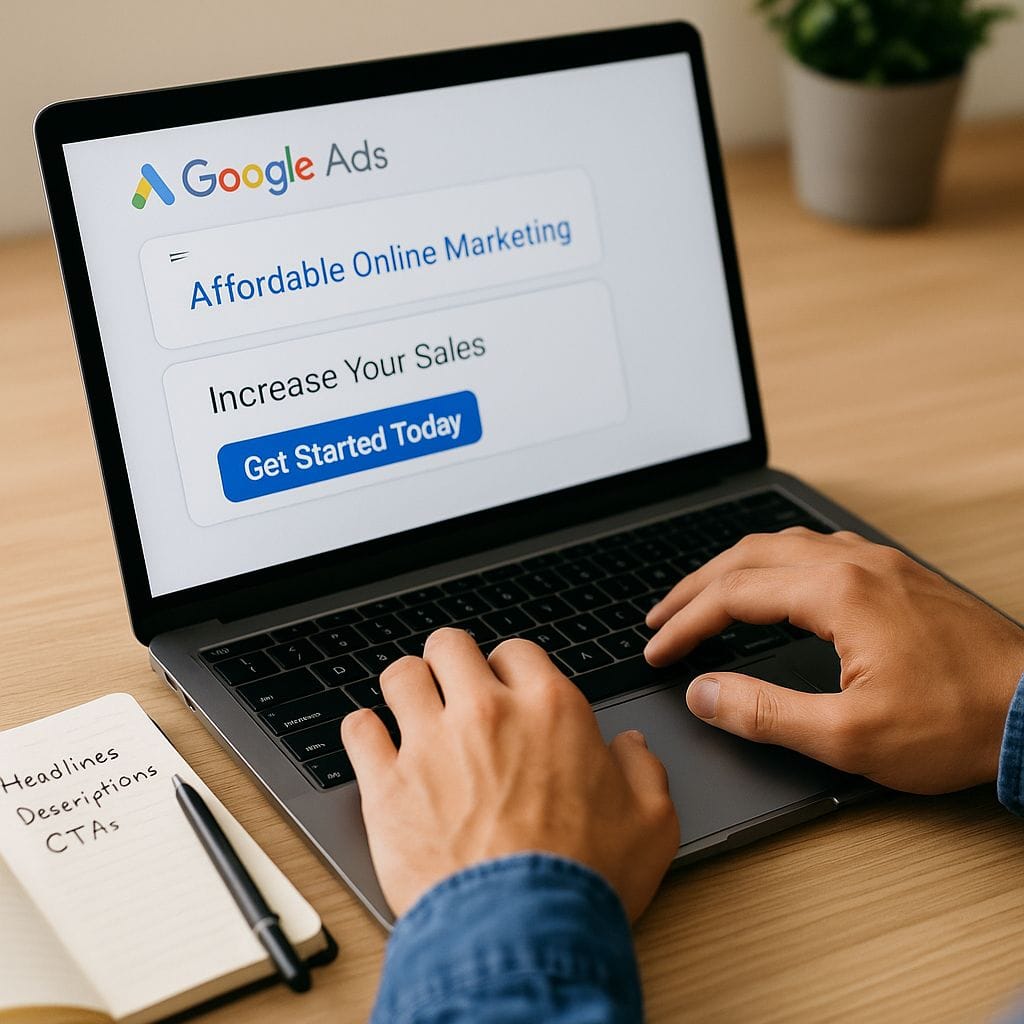Ad Copy That Converts Clicks into Customers
Great Google Ads don’t just get clicks—they drive results. And at the heart of every high-performing campaign is a headline and description that connects, persuades, and converts. In this expert-backed guide, you’ll learn how to write compelling ad copy that cuts through the noise and brings in customers.
As a 22x Google Ads Certified Expert, I’ve tested thousands of headlines and descriptions across industries. Here’s what works in 2025.
What You Will Learn in This Post:
Use Headlines That Match Intent + Add Value
Your three headlines are prime real estate:
- Headline 1: Always match the keyword or search intent.
- Headline 2: Emphasize benefits or a unique selling proposition (USP).
- Headline 3: Add urgency or a trust builder.
Example:
Headline 1: Fast Local Plumbing Service
Headline 2: No Call-Out Fee | 24/7 Experts
Headline 3: Book Online in 60 Seconds
Write Descriptions That Sell Solutions, Not Features
Focus your two description lines on benefits:
- What problem do you solve?
- What makes your offer unique?
- Why should they take action now?
Example:
Tired of leaks or clogs? Book a licensed plumber today — upfront pricing, no surprises.
Pro Tip: Use second-person language (“you”) and remove fluff.
CTAs That Convert in Google Ads Copywriting
Calls to action (CTAs) tell users what to do next. The more specific, the better.
Examples of strong CTAs:
- Get a Free Quote Now
- Schedule Your Call
- Claim Your Trial Offer
- Book Online in Seconds
Avoid vague CTAs like “Learn More” unless you’re using a consideration funnel.
Use Power Words and Emotional Triggers
High-performing ads blend emotional impact with logical benefit.
Power words to try:
- Guaranteed
- Risk-Free
- Limited Time
- Exclusive
- Trusted
Emotional triggers:
- Pain avoidance: Tired of overpriced repairs?
- Desire: Upgrade your kitchen today – elegant, fast, affordable.
Test Everything (And Keep Winners)
Even great copy can be better. Use Google Ads’ ad variation tools or Experiments to:
- Split-test CTAs
- Compare benefit-led vs. feature-led copy
- Test emotional vs. logical language
Keep testing as your audience changes over time.
What makes good Google Ads copywriting?
Clear headlines, benefit-driven descriptions, and strong CTAs are key to performance.
How many headlines should I use in Google Ads Copywriting?
You can use up to three headlines—use all of them to test intent, benefits, and urgency.
What is the ideal length for a Google ad headline?
Each headline can be up to 30 characters. Aim to match search intent while including keywords and value propositions.
How often should I refresh my Google Ads copy?
Update your ads at least once per quarter, or whenever performance declines. Regular A/B testing helps you stay competitive.
Can strong copy really lower my cost per click (CPC)?
Yes. High-quality ad copy improves CTR and Quality Score, which directly lowers CPC and boosts overall ROI.
Final Takeaway: Strong Copy Multiplies Your ROI
Google Ads copywriting is the most overlooked performance lever. Smart, emotional, conversion-driven copy will lift your CTR, increase Quality Scores, and lower your cost per lead.
Need help with Google Ads copywriting or testing your ads? Let’s create high-converting copy for your next campaign.

📅 Book a Free Copy Audit Call
🔍 Download My Proven Google Ads Ad Copy Template(Coming Soon)
🌐 Visit UR Ads Partner
🌐Some Helpful External Links:
About the Author
UR Ads Partner
✅ 22x Google Ads Certified
💼 Copy-Driven Campaign Specialist
🌐 Helping Small Businesses Get More Leads for Less
